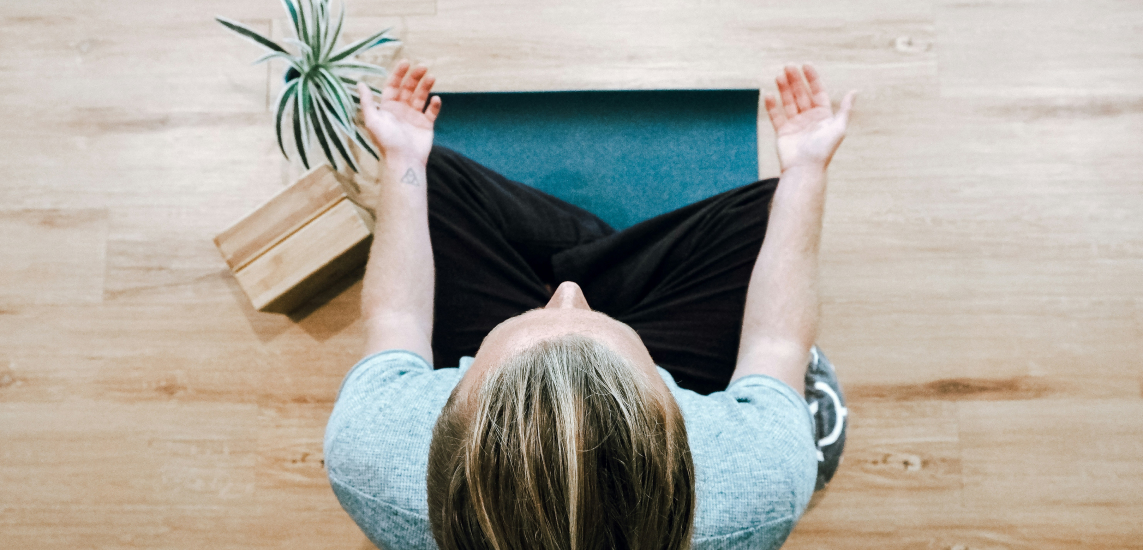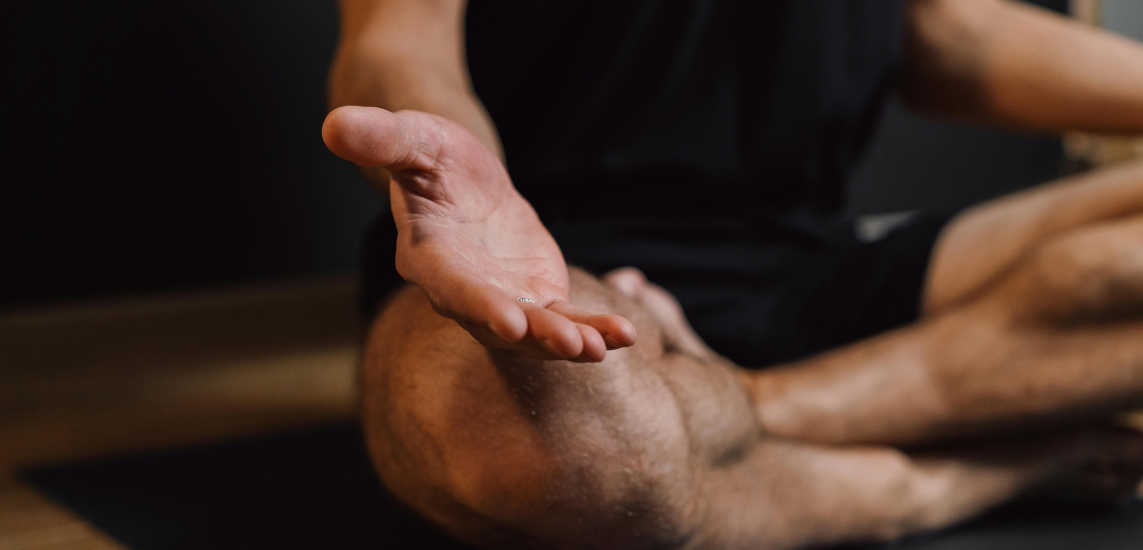You don’t just find inner calm and strengthen your mental health in a remote beachside villa. You can intentionally create a safe place anywhere. Explore how to do home retreat for your wellbeing.
Creating A Home Retreat: Shifting Perspectives
What is a home?
An arrangement of bricks and mortar protecting you from the elements? A set of habits collected around your eating and sleeping routines? A feeling of safety and refuge?
A home is all these things. A place we carve out of the world and call ours, home is the physical expression of a psychological state of rest and equilibrium. It’s the threshold between us and the world, the boundary between stress and relaxation, public and private.
In a productivity obsessed culture, the home is often just another possession, demoted to a pit stop between bouts of work, or a place to wait until you can find something more exciting to do. But with more and more people spending time at home, it’s worth shifting perspectives and exploring how to hold a retreat at home.
It’s Time For A Break
Punishing work hours, economic insecurity, chronic stress, political pessimism and a steady background panic at the state of the world is now considered broadly normal, as is being tired all the time, physically and mentally.
The world “out there” can be overwhelming to say the least, and navigating the tangled web of pressures and obligations forces us to adopt an attitude of constant, low-grade anxiety. Suspended in near permanent fight-or-flight mode, we find ourselves struggling for survival in a world dominated by ego, fear, insecurity and guilt.
No wonder we’re exhausted! A world built on abstract thought, endless productivity, and hyper-vigilance can feel hostile towards our human bodies, which only ask for rest and time to heal. Blame it on our schooling system, or long, regimented work hours, but many of us have come to treat ourselves like machines instead of living, breathing organisms. In the relentless pursuit of bigger, better, faster we may ignore or actively push against our legitimate needs for play, rest, and the right to simply exist peacefully in the moment without activity. Our bodies tighten up in knots, our thoughts tangle in on themselves and our hearts harden.
Clearly, it’s time for a break. If your own harmony has become dysregulated enough, however, you may hold the belief that relaxation is useless or even a moral failing. Even when we consciously decide we need to rest, we may put unnecessary pressure on ourselves to do it “right” or recharge merely for the sake of depleting ourselves again in the workplace.
Your Home: A Place To Consciously Recalibrate
Everything in life must rest, eventually. Nature favors cycles, spending as much time in active effort as in sleep and silence. Caught up in the bluster of modern life, we can forget that we are human beings with bodies, and, being part of nature, those bodies need to rest and refuel.
Our homes are like extensions of our bodies and minds. Sometimes we actively venture into the outside world to connect with others, create, work or pursue goals; sometimes we retreat into ourselves again to process, refresh and recover our equilibrium.
You don’t need to go to a remote retreat center or pay to meditate in a special room. Your home and your own intuition is all you need for a mini retreat to recharge, ground and recover. Relaxing at home can be a conscious daily practice where we give ourselves care, make room to rest, and maintain healthy boundaries. Here are 3 ways to start your retreat at home:
1. Maintain A Healthy Morning Routine
Most of us would make a guest remove their dirty boots before coming into our clean home. But what about the mental and emotional “dirt” you let in every day without a second thought? What good is a state-of-the-art security system when you actively welcome stress into your home – an arguably greater threat to your wellbeing?
A healthy morning routine is like mind maintenance. It’s the daily opportunity to check in with your inner self, ask what’s needed, and what can be let go. Practice regular “spiritual hygiene” and be discerning – scan your body and look into your thoughts to find what is harmonious and healthy, and what isn’t. By doing this, you consecrate every new day, bringing in a spirit of cleansing and renewal, gathering and setting your intention for the day rather than tumbling along unawares with whatever pressures and distractions emerge.
Practical tip: You matter. Your experience, your desires and your limits matter. Ask yourself how you feel every morning and, more importantly, respect your answer. Rather than making a To Do list of tasks, note down what your body, mind and spirit are asking for each morning. A little rest and patience? Healthy food? Socializing or intense physical activity? Gift these things to yourself.
Discover this collection of guided morning meditations that help to start your day with awareness and intention:
- Morning Meditation With Music - Happiness Affirmations Jonathan Lehmann 10:28
- Morning Ritual - Setting Daily Intentions Jason McGrice 10:03
- Morning Meditation - Guided Visualization Bethany Auriel-Hagan 6:01
- I AM Morning Affirmations: Happiness, Confidence, Freedom, Love, Passion & Purpose Kenneth Soares 15:01
- Good Morning Gratitude Practice David Gandelman 10:52
Read more: Discover two ways of dealing with morning anxiety. Which one will you choose?
2. Prioritize Unstructured Time
The outside world runs on its own breakneck schedule. Movement is constant, deadlines are tight and every block of time is spoken for. Why bring that rushed energy into your home, the place where you have most autonomy?
You don’t have to be a workaholic to feel uncomfortable about unstructured time, though. Fearing laziness, many of us practically forbid ourselves to relax or else make a chore of it. There’s a thriving industry around selling people all the advice and lifestyle trinkets needed to pursue their down-time with the same frenzied ambition as they do their up-time!
Read more about how constantly being too busy poses dangers for our bodies, relationships, and lifestyles.
But can you let go of all that? Take a few hours “off” — forget work, worries and especially any preconceived ideas of what you’re “supposed” to do to relax. You could certainly meditate, but why not begin by committing first only to relax? Trust that your body knows how, if only you’ll give it a chance and release any force or expectation.
It’s OK if you need a solid three-hour nap. You have full permission to soften, open, melt, and let go. Imagine tension in your muscles, knots in your mind and hardness in your heart all loosening and falling away. Breathe deeply. Listen to what your body wants and abandon control.
Fear of losing oneself in the oblivion of deep relaxation is unfounded — the irony is that it’s only in utter softness and release that we can revive and begin to build back up again. Without deep rest, you never authentically arrive at a rejuvenated and genuine zest for life. Nothing new and fresh can begin if it is never allowed to first stop.
Practical tip: Literally lay on the floor and let gravity do its work. Tune into what feels good in your body, in every moment. Don’t force yourself to stay awake if you’re truly sleepy; likewise there’s no virtue in pushing yourself to do something “good for you” if what you’re really needing is to let go of it all — including the obligation to meditate! Explore how to practice informal meditation off the cushion in your daily life.
To feel into your body and its underlying needs body scan meditations can be a helpful guidance — explore hundreds of free guided body scan practices.
3. Keep Conscious Boundaries
Your home is a literal and metaphorical limit between you and the outside world. What do you permit in and out of your private space? Or to ask the question another way, how do you want to be? Use home time to reset a healthy baseline stress level and tune into what really matters.
When we create not just a retreat at home, but a home in general, we have the chance to consciously choose what to allow into our space, including physical objects, people, ideas or even energies. We can use the inside to cultivate what matters to us, while consciously drawing a boundary to keep what is unhealthy or unwanted on the outside. Let the edges of your home mirror your values.
Practical tip: Think of your home as a blank canvas — you get to decide how best it can support your wellbeing during time at home. Is it time to redecorate, throw out old clutter or treat yourself to something indulgent simply because it makes you smile?
Read more: In this article, Dr. Candice Creasman explores boundary violations and why boundaries are a source of discomfort and spiritual confusion.
By consciously and deliberately using a home retreat to heal, recoup and recenter, we are empowered to shape our experience to our own purpose. We can trust that our bodies, hearts and minds know exactly how to heal and be well – the home is merely a space and time in the world for us to do it in peace.





-1.jpg)

